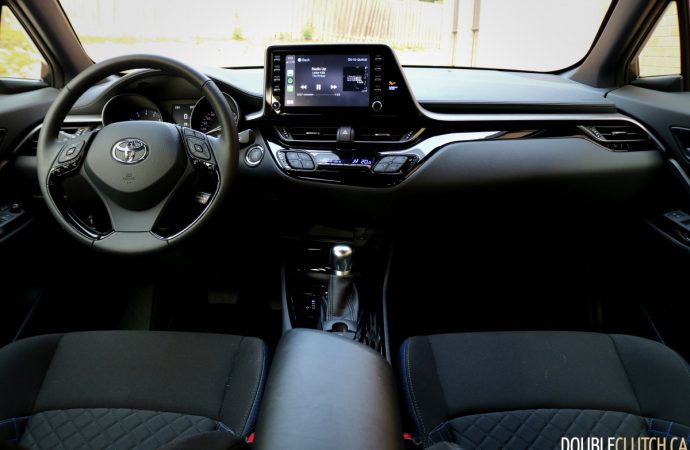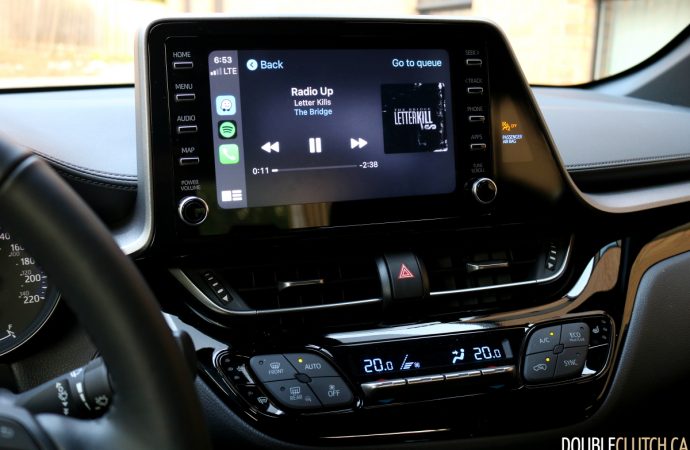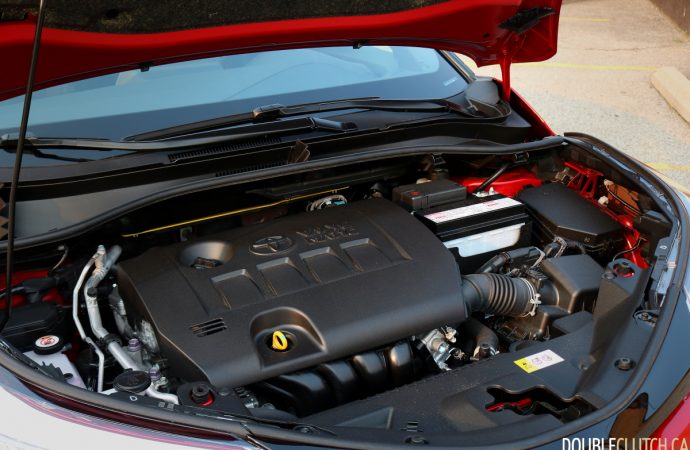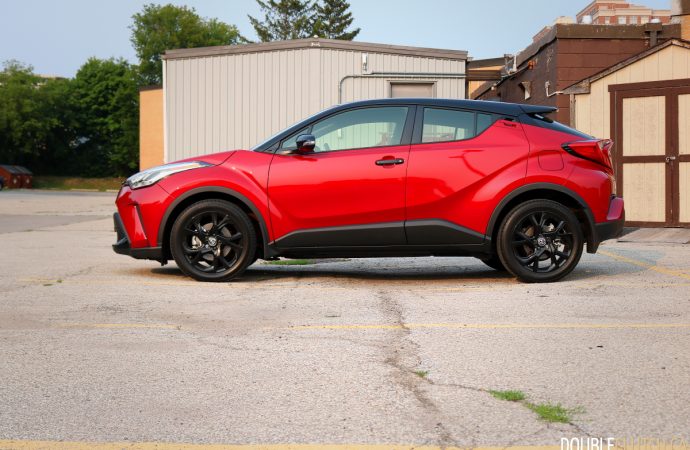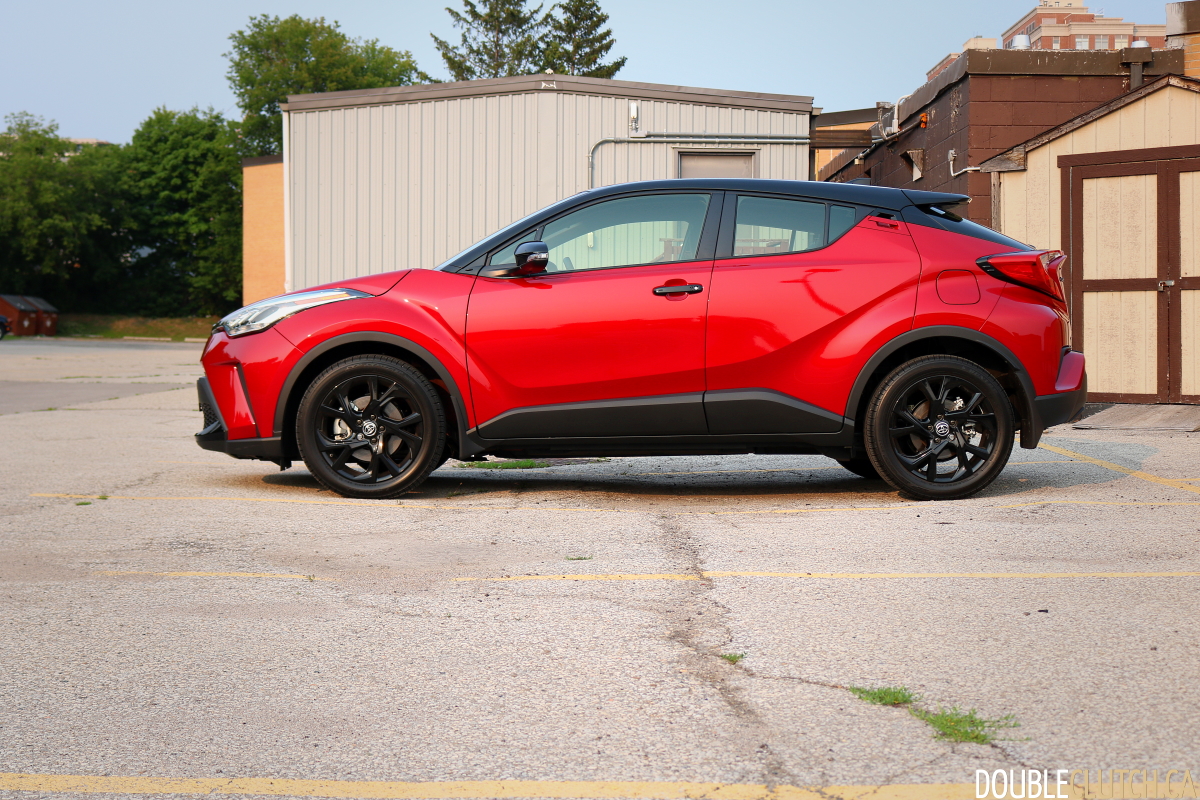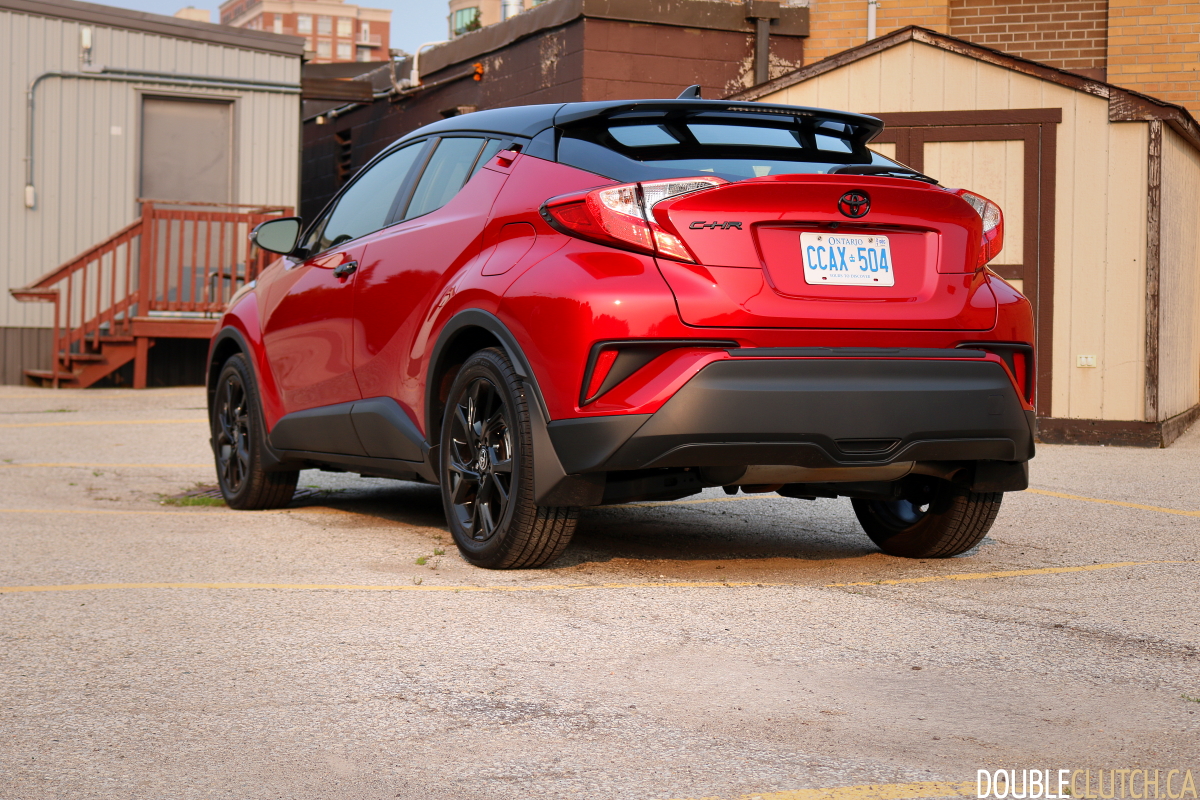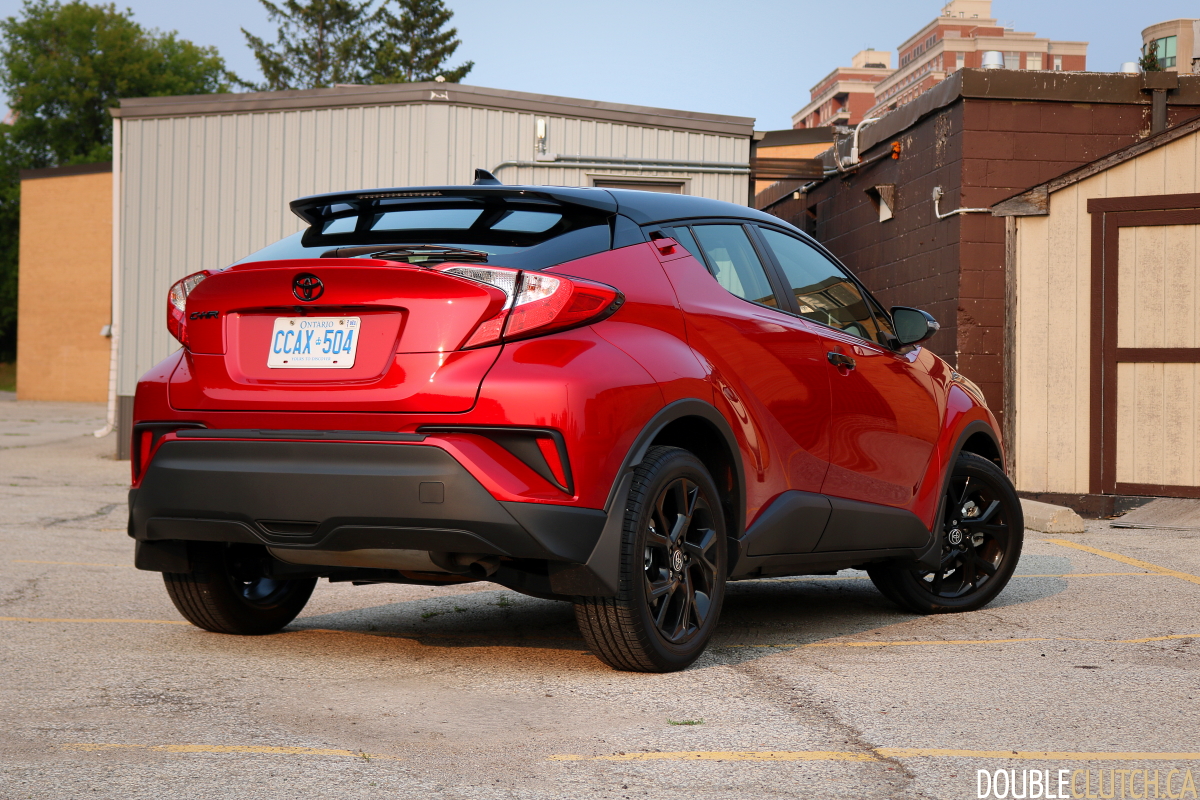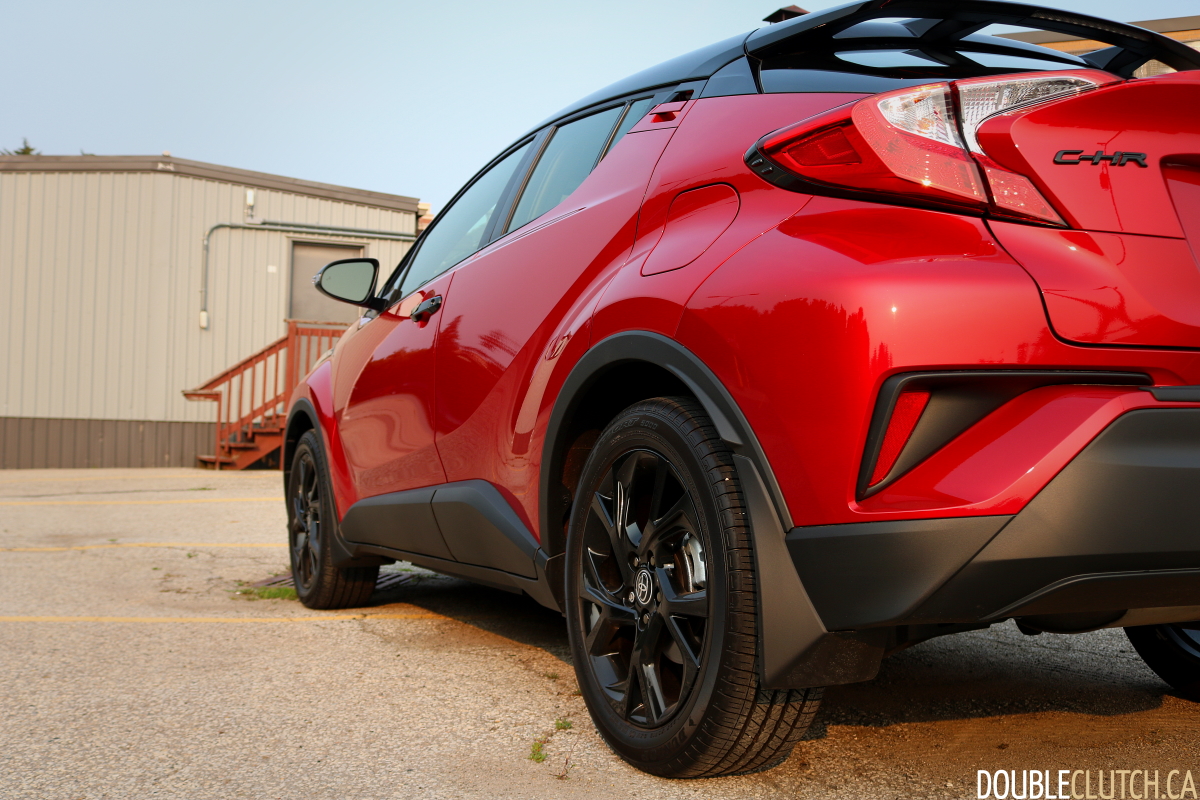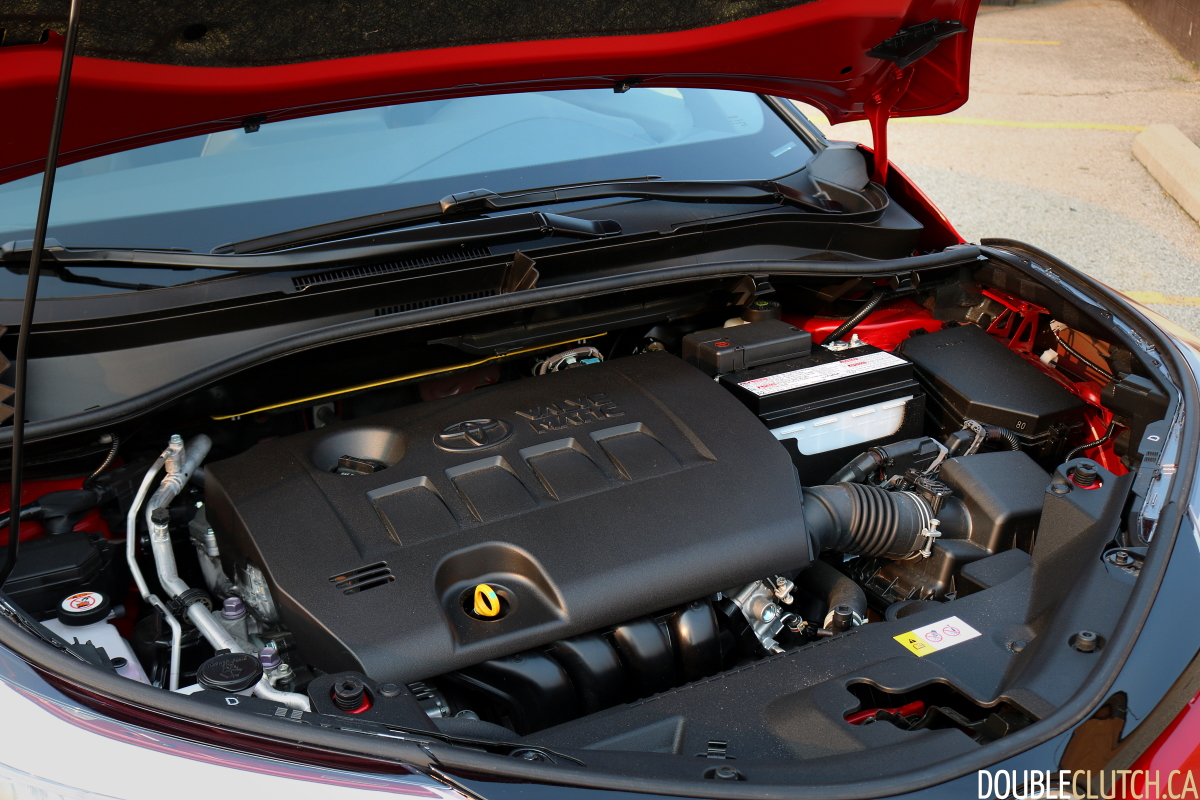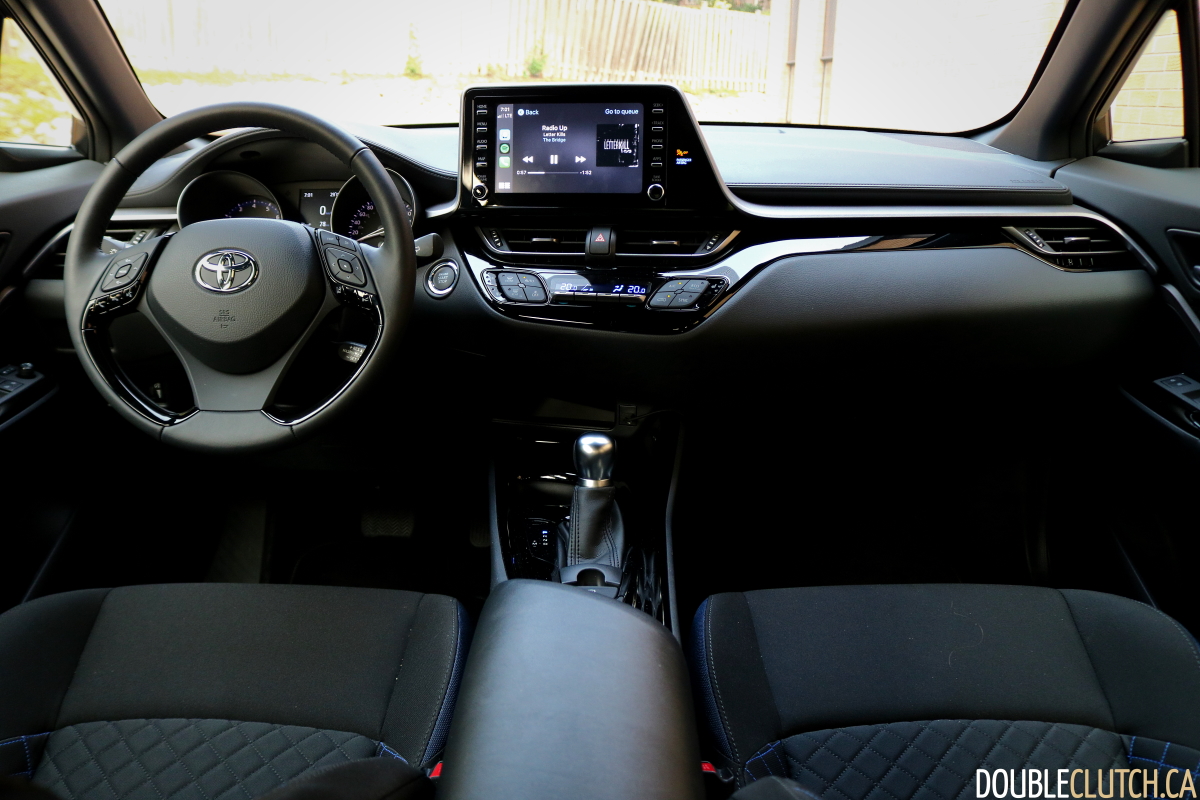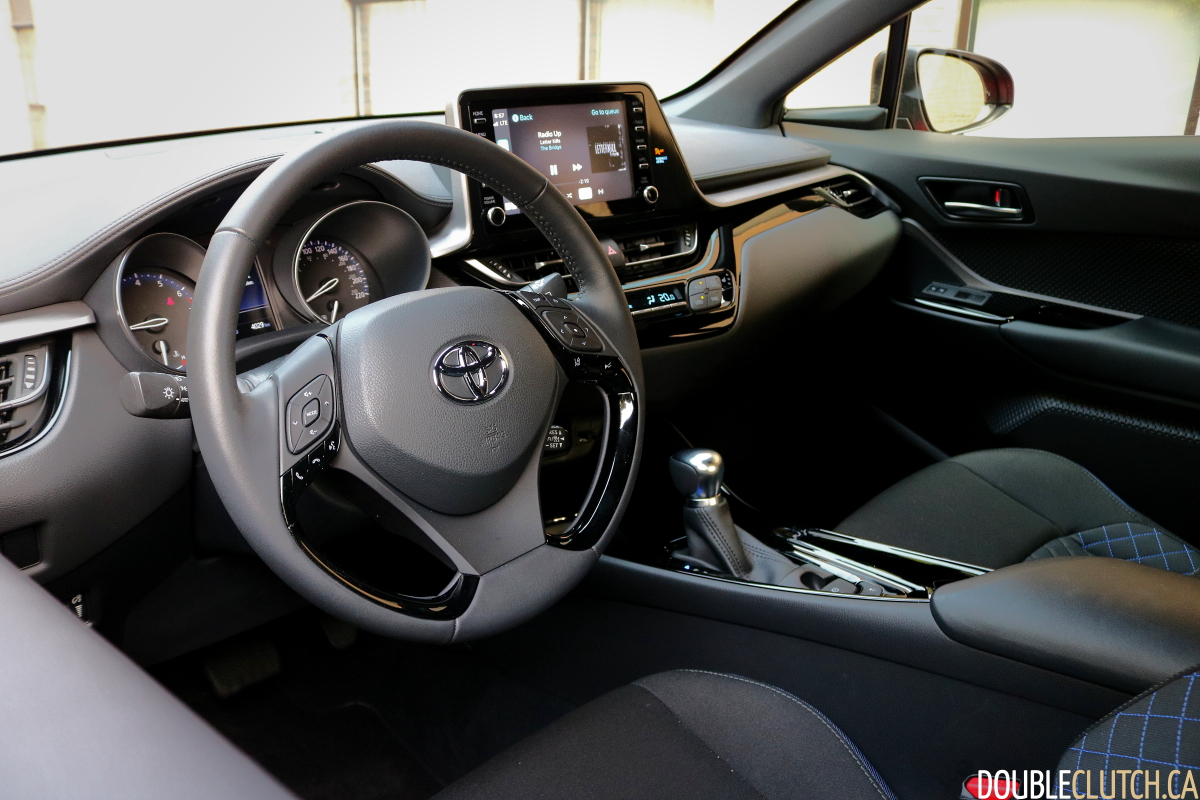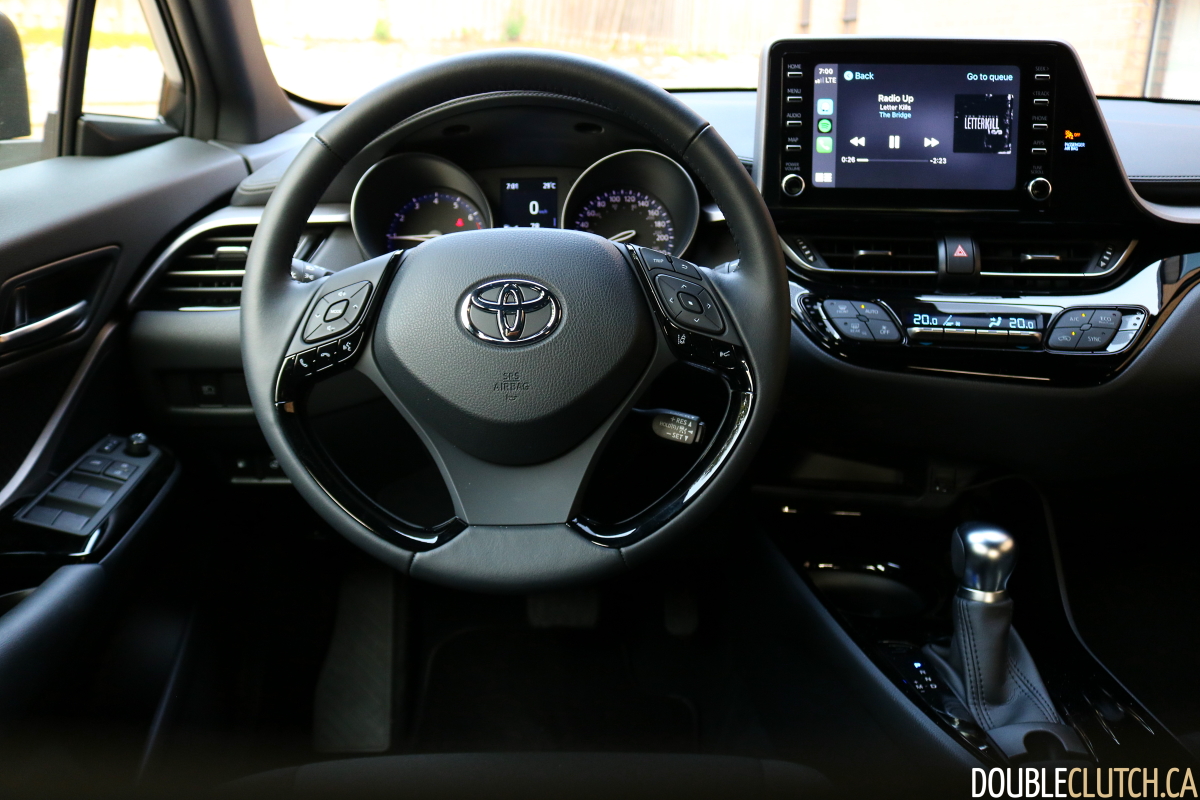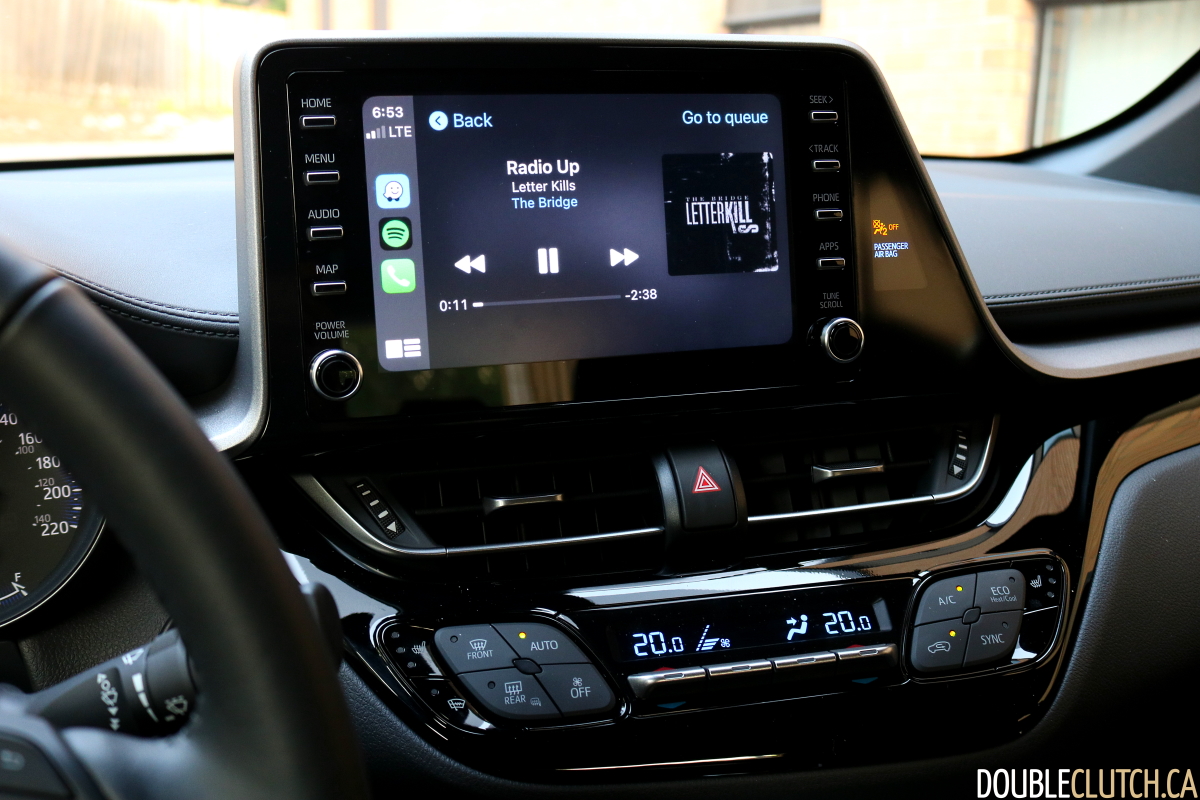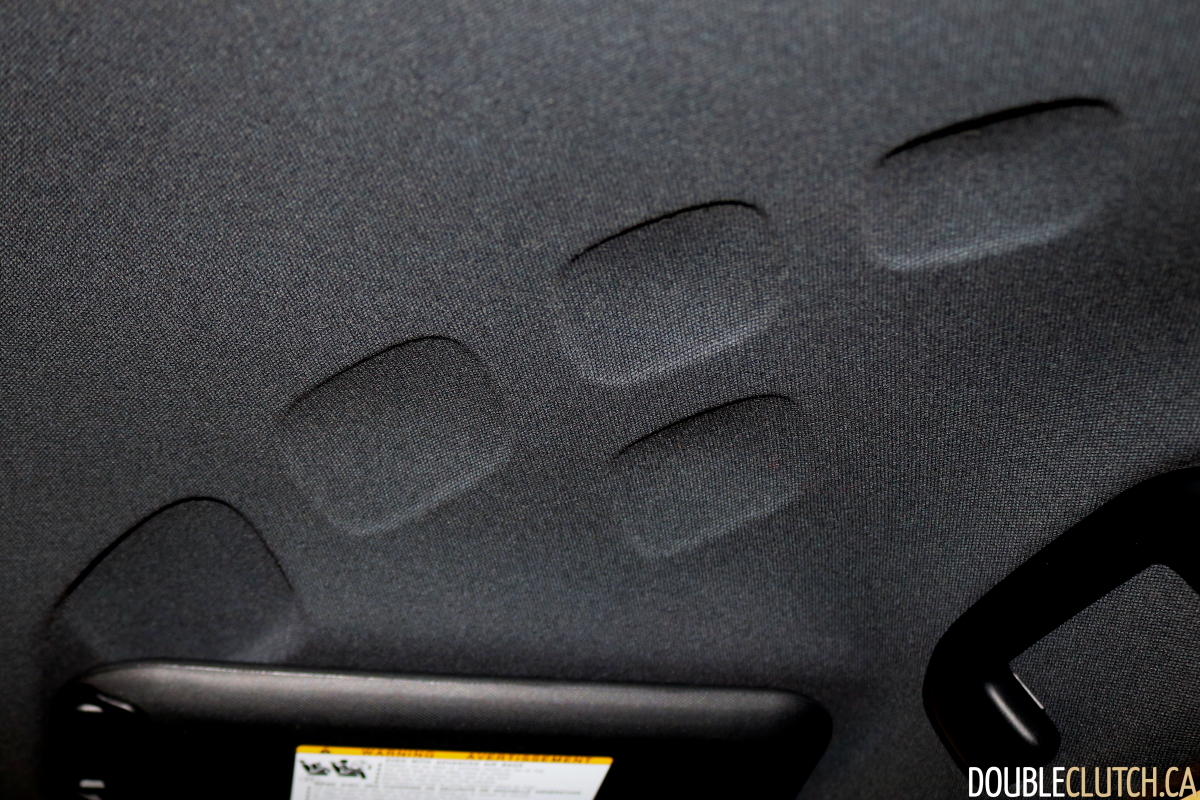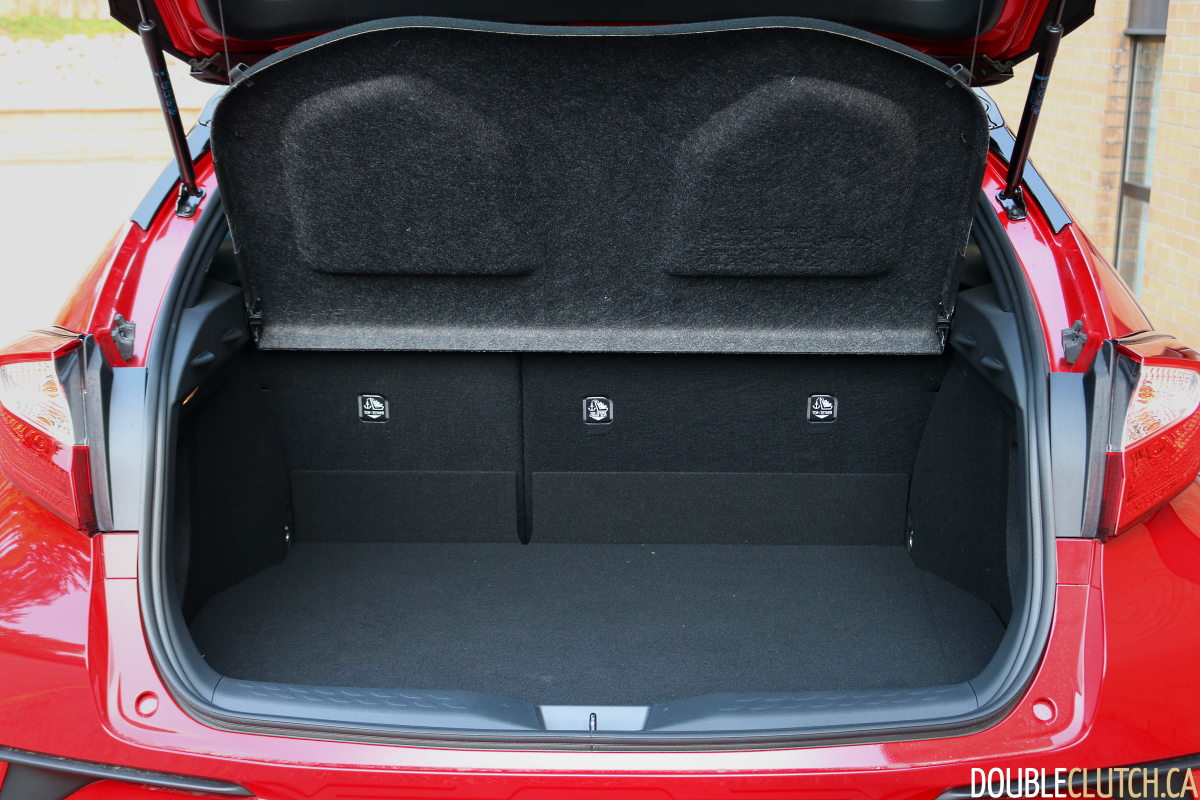Five years ago, the single greatest brand experiment involving automobiles and urban culture was put out to pasture. On the face of it, Scion was a youth sub-brand of Toyota, offering quirky, affordable cars at reasonable prices. From a cultural perspective, it was so much more than that. It had its own record label, handed out mix CDs at autoshows, sponsored everything from drifting to art, put out its own cultural zine and showed millennials how cars could fit in with everything they love. In the process of disbanding, it left behind four cars that were absorbed into Toyota. The iA, a rebranded Mazda2 that never really sparked enthusiasm, the FR-S, arguably one of the most important entry-level sports coupes of all time, and this, the 2021 Toyota C-HR Nightshade Edition.
While the rest of the final Scion lineup was generally fairly normal, the C-HR was heralded as the torchbearer of all things weird. And well, look at it. There’s so much styling going on that it genuinely doesn’t look like anything else on the road. Available two-tone paint, frog-eye headlamps, rear door handles way up in the c-pillars, pod-like tail lamps that stick out from the body sides and two distinct spoilers are only some of the incredibly out there styling touches bestowed on the car. Love it or hate it, you simply can’t deny that it isn’t boring.
On the inside of the C-HR, the quirks continue. The gear knob looks like a miniaturized version of Robocop’s dome and diamond-textures surfaces are absolutely everywhere. Diamonds on the headliner, the door cards, the speaker grilles, the seats, even the kick plates. Forget a fancy engagement ring, what about a C-HR? All these diamonds are very funky and beg the question, “Why aren’t other automakers experimenting more with texture?”
As for interior comfort, it’s actually quite good. There’s more than enough room and adjustability up front for drivers of all sizes, while rear seat legroom is on the more commodious end of the segment. There are some concessions to rear passenger visibility and cargo space due to the unusual c-pillar-mounted door handles and sloping roofline, but they’re not as bad as one might think. One neat touch that more automakers should adopt is the cargo floor that folds into grooves in the cargo area walls to keep itself up. It’s an inexpensive convenience touch that every car should really adopt.
In terms of interior technology, you do get a lot of kit on the C-HR. Our XLE Premium Nightshade tester came with power-folding mirrors, automatic LED headlamps, a proximity key, dual-zone automatic climate control, power-adjustable driver’s lumbar support and a wonderfully configurable screen in the gauge cluster that can display everything from the current song playing to average fuel economy.
Infotainment comes in the form of an eight-inch touchscreen with Apple CarPlay and Android Auto capability. It’s a fairly responsive unit with acceptable black levels, although it is a long reach from the driver’s seat. Toyota have displayed good common sense by installing plenty of redundant controls including a tuning knob and displaying climate control information on a second, separate screen. It’s all a definite step up from most systems on the market, if not as slick as the system in the Mazda CX-30. As for audio, the C-HR’s standard six-speaker audio system is reasonably acceptable for the price, offering nothing outstanding yet no glaringly annoying deficiencies.
Powering the C-HR is Toyota’s 3ZR-FAE two-litre naturally-aspirated four-cylinder engine. While it isn’t the up-to-the-minute 169-horsepower motor from the current Corolla, it isn’t a bad unit. Peak power amounts to 144 horses and peak torque clocks in at 138 lb.-ft., perfectly sufficient numbers overall. Hitched exclusively to a continuously variable transmission, it’s not exactly electric but it’s not underpowered either. While there is some CVT rubber-banding on display when you bury your foot through the carpet, it’s tuned to comfortably ride the torque band around town and generally keep noise low.
A potential bummer to some Canadians is that the C-HR only spins its front wheels, with all-wheel-drive not being available as an option. The truth is, winter tires beat just having all-wheel-drive in any snowy scenario, and if you think you can’t drive in the winter without all-wheel-drive you should probably hang up your keys for good.
A key selling point for subcompact crossovers is fuel economy. Canadians like to sit up high so they can lord over other drivers and see if any small ducklings have suddenly darted into the road, but we’re also stereotypically thrifty. Picture Ebenezer Scrooge if he wasn’t unnecessarily cruel to children. As such, the C-HR’s fuel economy is officially rated at 8.7L/100km in the city, 7.5L/100km on the highway and 8.2L/100km combined. Over a week of mixed driving, I averaged 7.7L/100km, a commendable number that bests many competitors.
For such a small vehicle in a decidedly un-sporting segment, the C-HR actually rides and handles genuinely well. Overall comfort over rough pavement is absolutely excellent and at the top of the segment. The suspension just absorbs every bump without even the slightest hint of head toss from the C-HR’s occupants and without any floatiness that could cause nausea in passengers. We’re talking about ride quality so remarkably good, it makes the Gardiner Expressway feel like it’s paved in three-ply. Point the C-HR towards a corner and the initial characteristic displayed is safe, gentle understeer that can be managed with trail braking.
Body roll is well-controlled and the overall demeanour of the C-HR is very car-like. It’s a more stable feeling than what some competitors have to offer, so needless to say, I’m a fan. The C-HR’s steering is light enough for easy parking lot maneuvering yet weights up enough at speed to not be excessively vague and the steering ratio is quick enough to make the C-HR feel its subcompact size. This is a genuinely well-driving subcompact crossover, something that can’t be said of many competitors.
If there’s any point of contention with the C-HR, it’ll likely be pricing. The base LE model starts at $23,950 and while it does come with dual-zone automatic climate control, it doesn’t come with things like alloy wheels or heated seats. To get those along with such niceties and blind-spot monitoring and a heated steering wheel, consumers must step up to the XLE Premium trim for $26,550. The Nightshade trim adds a few blacked-out cosmetic bits over the XLE Premium for an additional $860 and the C-HR range is topped by the Limited trim at $29,150 which adds satellite radio, leather seats and adaptive LED headlamps. It all makes for a subcompact crossover that’s definitely not the best value in the segment but not the worst value either.
Chuck Palahniuk wrote “All God does is watch us and kill us when we get boring. We must never, ever be boring.” While much of the Scion brand fell to that fate, the 2021 Toyota C-HR Nightshade Edition is not afraid to keep on living. It’s not the most practical subcompact crossover on the market, nor is it the best value, but it’s a genuinely good vehicle and it does something that not a single other subcompact crossover can claim to do – be endearingly weird. Just for that, I’m glad that it exists, let alone the fact that it’s genuinely a good car. Pragmatic iconoclasts and nonconformists, this one’s for you.


